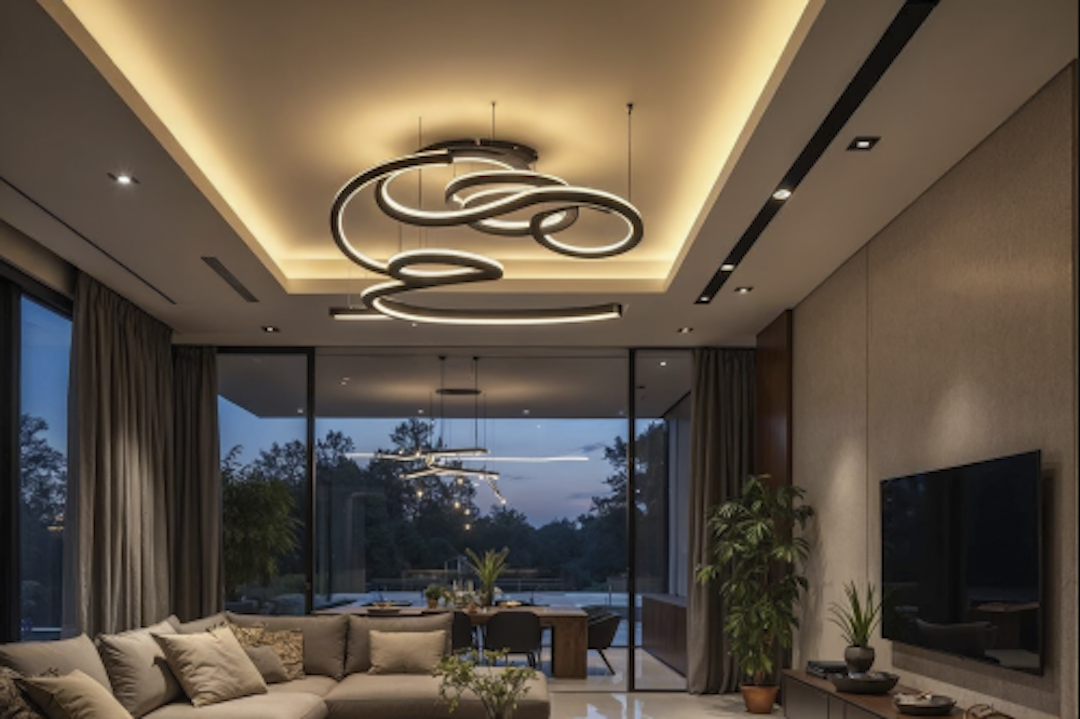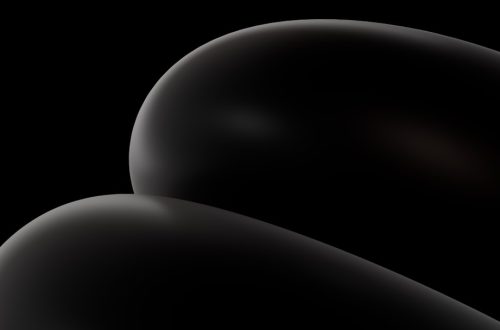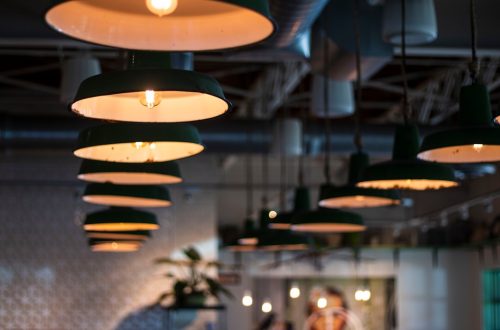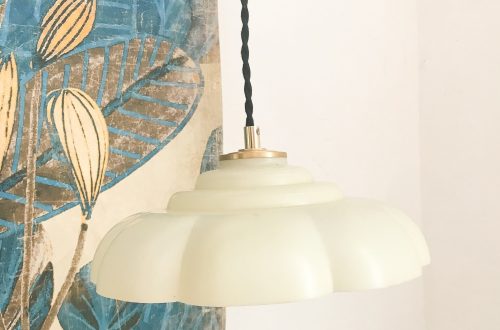
Enhance Your Space with Stylish LED Ceiling Lights
LED ceiling lights offer numerous advantages for residential and commercial spaces. Their energy efficiency is a primary benefit, consuming significantly less power than traditional incandescent or fluorescent lights, resulting in substantial energy bill savings over time. LED lights also have an extended lifespan, lasting up to 25 times longer than incandescent bulbs, which reduces the frequency of replacements and maintenance.
The durability and reliability of LED ceiling lights are notable features. Constructed with solid-state components, they are more resistant to shock, vibration, and external impacts, making them ideal for high ceilings or areas where maintenance is challenging. LED lights generate minimal heat, reducing fire hazards and enhancing safety in various settings.
They are available in a wide range of color temperatures, allowing for customizable lighting options to suit different environments and activities. LED ceiling lights offer environmental benefits as well. They are free from toxic chemicals and are fully recyclable, making them a more sustainable lighting option.
LED lights emit minimal UV or infrared radiation, reducing potential harm to artwork or other sensitive materials. These combined advantages make LED ceiling lights an intelligent choice for those seeking to improve lighting efficiency and reduce environmental impact.
Choosing the Right LED Ceiling Lights for Your Space
Space Considerations
The first consideration is the size and layout of the space where the lights will be installed. Different rooms may require different types of Verydesigns lighting, such as recessed lights for a seamless look or surface-mounted fixtures for a more decorative touch.
Lighting Specifications
It’s important to consider the height of the ceiling as well, as this will impact the type of fixture that will work best in the space. Another important factor to consider is the color temperature of the LED lights. Color temperature refers to the warmth or coolness of the light produced by the fixture. Warmer color temperatures (around 2700-3000K) are often used in living spaces and bedrooms to create a cozy and inviting atmosphere, while cooler color temperatures (around 4000-5000K) are better suited for task lighting in areas like kitchens and workspaces.
Additional Features and Design
It’s important to consider the function of the space and the desired ambiance when selecting the color temperature of the LED ceiling lights. Additionally, it’s important to consider the dimming capabilities of the LED lights if you desire adjustable lighting levels. Not all LED fixtures are dimmable, so it’s important to check the specifications before making a purchase if dimming is a priority for your space. Finally, consider the design and style of the LED ceiling lights to ensure they complement the overall aesthetic of the room. Whether you prefer sleek and modern fixtures or more traditional designs, there are plenty of options available to suit your personal style and preferences.
How to Install LED Ceiling Lights
Installing LED ceiling lights can be a straightforward process with the right tools and knowledge. Before beginning the installation, it’s important to turn off the power to the existing light fixture at the circuit breaker to ensure safety. Once the power is turned off, remove the existing light fixture and disconnect the wires.
It’s important to follow all safety precautions and consult a professional electrician if you are unsure about any aspect of the installation process. After removing the old fixture, it’s time to install the new LED ceiling lights. Start by mounting the fixture bracket to the ceiling according to the manufacturer’s instructions.
Next, connect the wires from the fixture to the corresponding wires in the electrical box, ensuring a secure connection with wire nuts. Once the wiring is complete, attach the fixture to the bracket and secure it in place according to the manufacturer’s instructions. After the fixture is installed, it’s important to test the light to ensure it is functioning properly before completing the installation.
Once everything is in working order, turn the power back on at the circuit breaker and enjoy your new LED ceiling lights. If you are unsure about any aspect of the installation process, it’s always best to consult a professional electrician to ensure a safe and successful installation.
Creative Ways to Use LED Ceiling Lights in Your Home
LED ceiling lights offer endless possibilities for creative lighting solutions in your home. One popular way to use LED ceiling lights is to create a statement piece with a unique fixture design. Whether you opt for a sleek and modern chandelier or a more unconventional geometric design, LED ceiling lights can serve as a focal point in any room.
Additionally, using LED strip lights around the perimeter of a room can create a stunning indirect lighting effect that adds depth and ambiance to the space. Another creative way to use LED ceiling lights is to highlight architectural features or artwork in your home. By strategically placing recessed LED lights above or below cabinets, shelves, or artwork, you can draw attention to these elements and create visual interest in your space.
LED spotlights can also be used to accentuate specific areas or objects in a room, adding drama and dimension to your home decor. LED ceiling lights can also be used to create functional and stylish lighting solutions in areas like closets, pantries, and laundry rooms. Installing recessed LED lights in these spaces can provide bright and efficient lighting that makes it easier to find what you need while adding a modern touch to these often overlooked areas of the home.
Whether you’re looking to make a bold statement with your lighting or simply improve functionality in certain areas of your home, LED ceiling lights offer endless creative possibilities for enhancing your living space.
The Impact of LED Ceiling Lights on Energy Efficiency
LED ceiling lights have a significant impact on energy efficiency compared to traditional lighting options. One of the main reasons for this is that LED lights use significantly less energy than incandescent or fluorescent bulbs while still producing bright and efficient light. This means that using LED ceiling lights can lead to substantial cost savings on energy bills over time, making them a smart investment for any home or business.
In addition to using less energy, LED lights also have a longer lifespan than traditional bulbs, lasting up to 25 times longer than incandescent lighting. This means that LED ceiling lights require less frequent replacements, reducing maintenance costs and waste over time. The durability and reliability of LED lights also contribute to their energy efficiency, as they are more resistant to shock, vibration, and external impacts than traditional bulbs.
Overall, the energy efficiency of LED ceiling lights has a positive impact on both financial savings and environmental sustainability. By using less energy and lasting longer than traditional lighting options, LED lights help reduce carbon emissions and lower energy consumption. This makes them an ideal choice for anyone looking to improve their energy efficiency and reduce their environmental impact without sacrificing quality or performance.
Maintenance and Care for LED Ceiling Lights
Cleaning and Dusting
LED ceiling lights require minimal maintenance, but regular cleaning is essential to ensure they continue to perform at their best. Dusting or wiping down the fixtures regularly can help prevent buildup that can affect their performance over time.
Checking for Loose Connections and Wear
Regularly checking for any loose connections or signs of wear is crucial to ensure that your LED ceiling lights continue to function properly. If you notice any issues with the wiring or connections, it’s essential to address them promptly to prevent any potential safety hazards.
Following Manufacturer’s Instructions
In addition to regular cleaning and maintenance, it’s vital to follow any specific care instructions provided by the manufacturer for your LED ceiling lights. This may include recommendations for dimmer compatibility, proper usage guidelines, or specific cleaning products to use or avoid.
By taking these simple steps to care for your LED ceiling lights, you can help ensure that they continue to provide efficient and reliable lighting for years to come.
Trends in LED Ceiling Light Design
LED ceiling light design continues to evolve with new trends that offer innovative and stylish options for any space. One popular trend in LED ceiling light design is minimalism, with sleek and understated fixtures that blend seamlessly into modern interiors. These minimalist designs often feature clean lines and simple shapes that add a touch of sophistication without overpowering the space.
Another trend in LED ceiling light design is versatility, with fixtures that offer adjustable features such as color temperature or dimming capabilities. This allows users to customize their lighting experience based on their needs and preferences, whether they’re looking for bright task lighting or soft ambient illumination. In addition to minimalism and versatility, there is also a growing trend towards eco-friendly materials and sustainable design practices in LED ceiling light design.
Many manufacturers are incorporating recycled materials into their fixtures and prioritizing energy-efficient production processes to reduce their environmental impact. Overall, these trends in LED ceiling light design reflect a growing demand for stylish, functional, and sustainable lighting solutions that enhance both form and function in any space. Whether you’re looking for a sleek minimalist fixture or an eco-friendly design with adjustable features, there are plenty of options available to suit your personal style and lighting needs.





